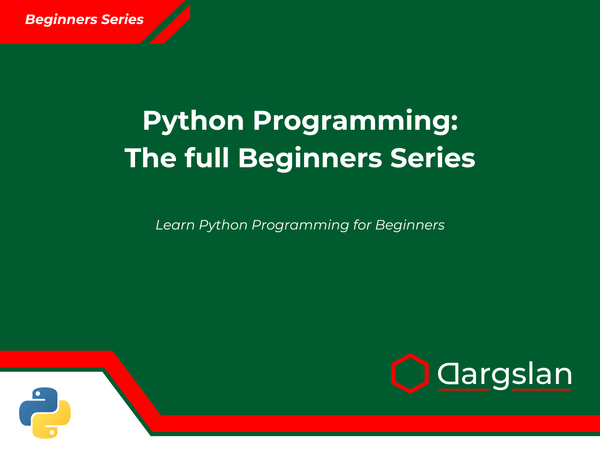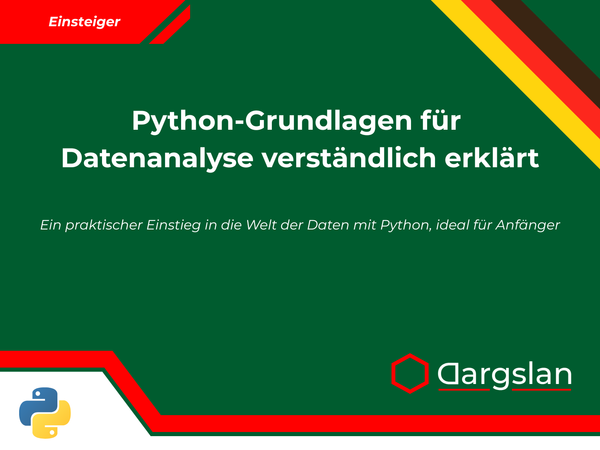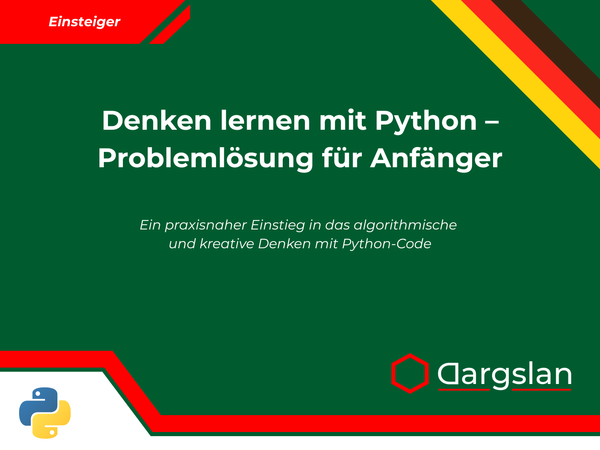Book Review: Intermediate Web Scraping with BeautifulSoup and Selenium
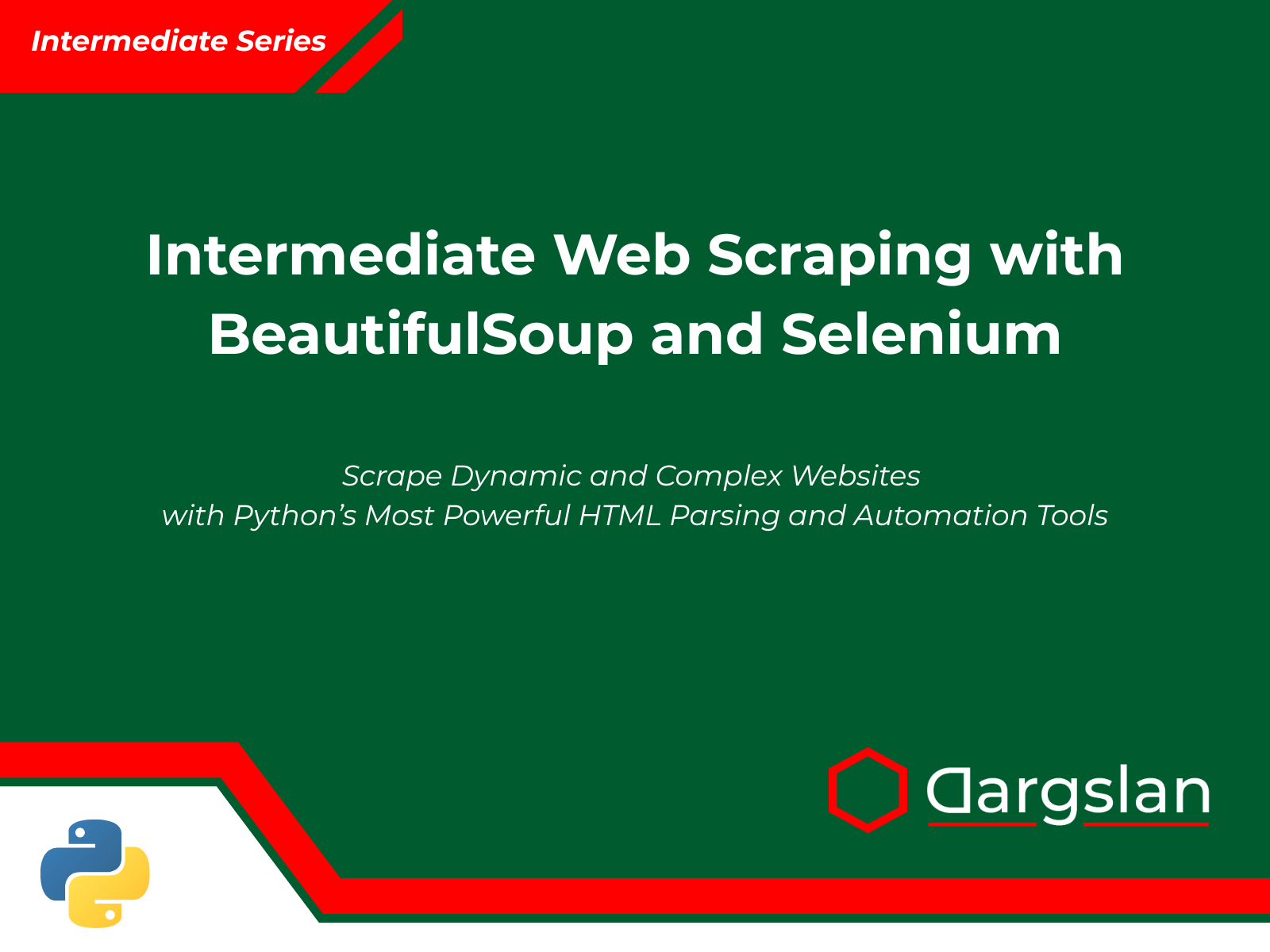
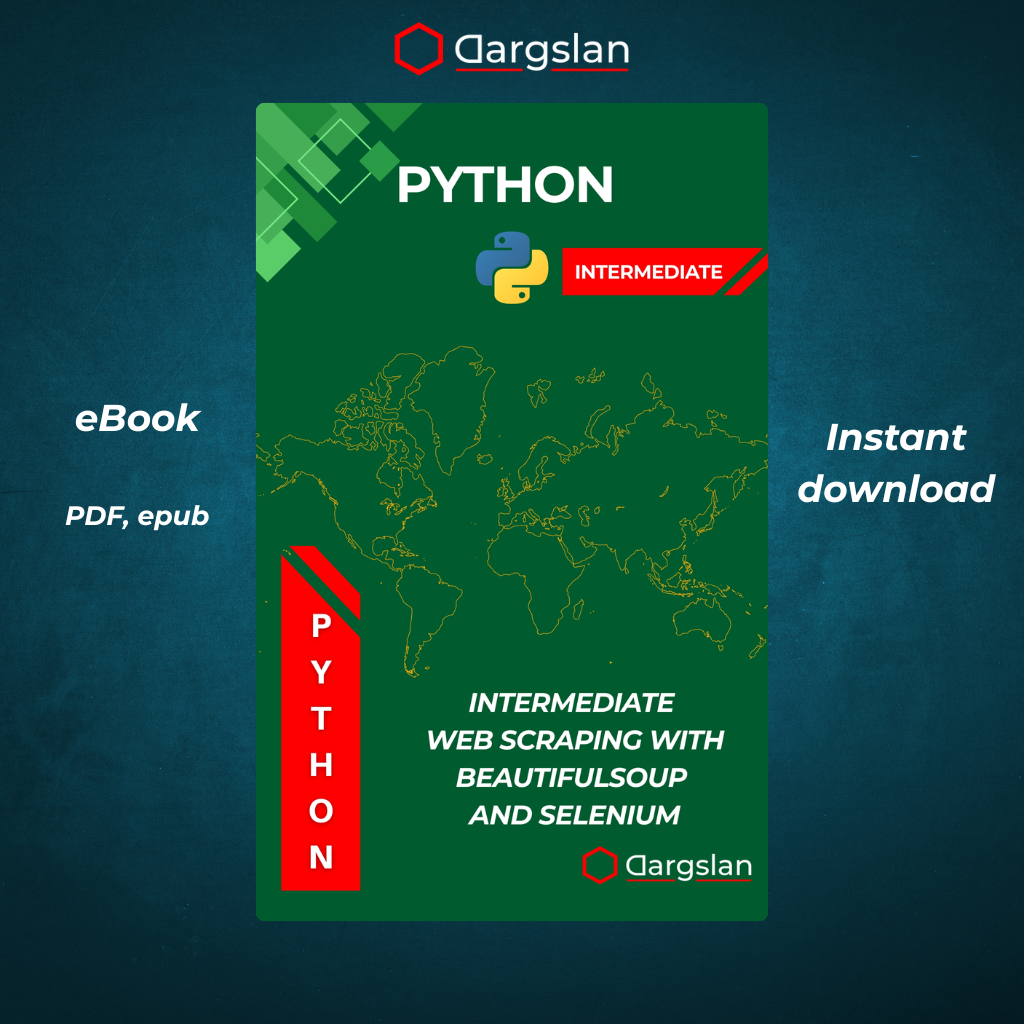
Intermediate Web Scraping with BeautifulSoup and Selenium
Scrape Dynamic and Complex Websites with Python’s Most Powerful HTML Parsing and Automation Tools
Intermediate Web Scraping with BeautifulSoup and Selenium: A Comprehensive Guide
A Detailed Look at the Definitive Resource for Advanced Data Extraction
In today's data-driven world, the ability to collect, analyze, and utilize web data has become an essential skill for developers, data scientists, and business analysts alike. "Intermediate Web Scraping with BeautifulSoup and Selenium" stands as the authoritative resource for those looking to elevate their web scraping capabilities beyond the basics and tackle the challenges of modern, dynamic websites.
Book Overview
This meticulously crafted guide takes readers on a journey through the intricate landscape of intermediate web scraping techniques. Rather than rehashing basic concepts, author Dargslan dives straight into the advanced methodologies that enable professionals to extract data from even the most complex web architectures. The book's subtitle—"Scrape Dynamic and Complex Websites with Python's Most Powerful HTML Parsing and Automation Tools"—perfectly encapsulates its mission: to equip readers with mastery over the two most powerful Python libraries for web data extraction.
At its core, this 10-chapter guide serves as a bridge between basic scraping knowledge and professional-level implementation. Each section builds logically upon the previous, creating a comprehensive learning path that transforms readers from novice scrapers to confident data extraction specialists.
Who Needs This Book?
This book is ideally suited for:
- Web developers looking to automate data collection
- Data scientists requiring diverse datasets for analysis
- Digital marketers tracking competitor information
- Researchers gathering online information systematically
- Python programmers wanting to expand their toolkit
- Anyone who has basic web scraping knowledge but faces challenges with dynamic content
The author assumes readers have foundational Python knowledge and some familiarity with HTML structure, making this truly an "intermediate" resource rather than an introduction to the field.
Chapter-by-Chapter Breakdown
Chapter 1: Web Scraping Beyond the Basics
The journey begins with a chapter that reframes web scraping through an advanced lens. Unlike typical introductions, this chapter immediately distinguishes between static and dynamic websites, explaining why traditional scraping methods often fail with modern web applications.
Readers will gain insight into:
- The evolution of web architecture and its impact on data extraction
- Common challenges in modern web scraping (JavaScript rendering, anti-bot measures)
- The ethical and legal landscape of data extraction in 2023
- Setting up a professional scraping environment with virtual environments
- Essential libraries beyond BeautifulSoup and Selenium that complement your toolkit
The chapter concludes with a practical assessment of when to use different scraping approaches, saving readers countless hours of trial and error in their projects.
Chapter 2: Advanced HTML Parsing with BeautifulSoup
Chapter 2 elevates BeautifulSoup from a simple parsing tool to a surgical instrument for data extraction. Rather than basic selectors, readers learn:
- Advanced CSS selector techniques for targeting nested elements
- XPath integration for complex document traversal
- Creating custom parsing functions for inconsistent HTML structures
- Handling malformed HTML and recovering from parsing errors
- Performance optimization techniques for large-scale scraping
A particularly valuable section covers the creation of robust parsers that can withstand website structure changes—a common issue that breaks most basic scraping scripts.
Chapter 3: Working with Pagination and Multi-Page Scraping
This chapter tackles one of the most common challenges in web scraping: navigating and extracting data across multiple pages. Readers will master:
- Detecting and handling different pagination patterns
- Building recursive scrapers for hierarchical content
- Maintaining state across multiple page requests
- Implementing intelligent crawling algorithms with prioritization
- Creating resumable scrapers that can recover from interruptions
The practical examples include e-commerce catalog extraction and news archive scraping, complete with code for handling both numbered pagination and "Load More" buttons.
Chapter 4: Introduction to Selenium for Dynamic Content
Chapter 4 marks the transition from static to dynamic content scraping, introducing Selenium as the solution to JavaScript-rendered websites. This chapter covers:
- Setting up WebDriver for different browsers (Chrome, Firefox, Edge)
- Understanding the differences between Selenium 3 and 4
- Executing JavaScript within the browser context
- Waiting strategies for asynchronous content loading
- Browser profile management for persistent sessions
The author provides exceptional clarity on Selenium's event-driven nature and how it fundamentally differs from request-based scraping approaches.
Chapter 5: Automating Logins and Form Submissions
Authentication barriers and interactive elements present major challenges for data extraction. This chapter provides solutions for:
- Securely handling credentials in scraping scripts
- Bypassing different types of login mechanisms (form-based, OAuth, multi-factor)
- Automating complex form submissions with validation
- Maintaining authenticated sessions efficiently
- Detecting and handling CAPTCHAs and anti-bot measures
Real-world examples include automating access to protected content, subscription-based websites, and interactive web applications.
Chapter 6: Combining Selenium and BeautifulSoup
This pivotal chapter reveals one of the book's most valuable insights: how to leverage the strengths of both libraries in a unified approach. Readers learn:
- When and why to use Selenium and BeautifulSoup together
- Building a hybrid scraping framework for maximum efficiency
- Using Selenium for navigation and interaction while parsing with BeautifulSoup
- Optimizing performance by minimizing browser automation
- Converting between different DOM representations
The hybrid approach demonstrated here often results in code that is both more maintainable and significantly faster than using either library alone.
Chapter 7: Handling JavaScript, Popups, and Infinite Scroll
Modern websites employ numerous techniques that challenge traditional scrapers. Chapter 7 provides solutions for:
- Working with sites that rely heavily on AJAX
- Strategies for infinite scroll content extraction
- Handling modal dialogs, overlays, and popups
- Dealing with lazy-loaded images and content
- Scrapers that can adapt to responsive design elements
A standout section addresses Single Page Applications (SPAs) built with frameworks like React, Angular, and Vue, providing specialized approaches for these particularly challenging targets.
Chapter 8: Downloading Files and Media
Data extraction isn't limited to text and numbers. This chapter explores:
- Efficiently downloading and processing images
- Handling different file types (PDFs, Excel, CSV)
- Working with embedded media (videos, audio)
- Managing download bandwidth and parallel requests
- Organizing and structuring downloaded content
The practical examples include creating a research paper downloader and a product image cataloger, complete with metadata extraction.
Chapter 9: Scraping Ethically and Legally
In an era of increasing regulation, Chapter 9 addresses the crucial non-technical aspects of web scraping:
- Understanding robots.txt and website terms of service
- Legal frameworks affecting web scraping (GDPR, CCPA, etc.)
- Implementing rate limiting and polite scraping practices
- Data privacy considerations when storing scraped information
- Keeping scraping projects within ethical boundaries
The author provides a balanced perspective on legal gray areas, helping readers navigate this complex landscape responsibly.
Chapter 10: Real-World Projects and Best Practices
The final chapter consolidates knowledge through complete, production-quality scraping projects:
- Building a news aggregator with content categorization
- Creating a competitive price monitoring system
- Developing a social media trend analyzer
- Implementing a job listing consolidator
Each project incorporates error handling, logging, proxies, and other professional features often omitted from simpler tutorials.
The Appendices: Essential References
The book includes four valuable appendices that serve as quick reference materials:
- Appendix A: BeautifulSoup and Selenium Cheat Sheets – Time-saving reference cards for syntax and common operations
- Appendix B: Common Scraping Errors and How to Fix Them – Troubleshooting guide for debugging scraping scripts
- Appendix C: Headless Browsing and Performance Optimization – Advanced techniques for scaling scraping operations
- Appendix D: Alternative Tools – Overview of complementary libraries like Scrapy, Playwright, and Puppeteer
Technical Depth and Code Quality
What sets this book apart from other web scraping resources is its commitment to professional-grade code. The examples provided aren't mere demonstrations but production-ready implementations that include:
- Proper error handling and retry mechanisms
- Comprehensive logging for debugging and monitoring
- Modular design patterns for maintainable scraping architectures
- Performance considerations for large-scale operations
- Testing strategies for scraper validation
The author consistently emphasizes robustness—teaching readers to build scrapers that can withstand website changes, network issues, and unexpected content variations.
Learning Approach and Pedagogy
The book employs a multi-faceted learning approach:
- Conceptual explanations that provide the theoretical foundation
- Code snippets that demonstrate specific techniques
- Complete case studies that integrate multiple concepts
- Challenges at the end of each chapter to reinforce learning
- Troubleshooting sections that address common pitfalls
This layered approach ensures readers not only understand individual techniques but also how they fit into larger scraping projects.
The Value Proposition
For professionals working with data, this book delivers exceptional value through:
- Time savings – Providing proven solutions to common scraping challenges
- Access to data – Enabling extraction from previously inaccessible sources
- Automation potential – Reducing manual data collection efforts
- Competitive advantage – Offering insights others cannot easily obtain
- Skill development – Building transferable knowledge in web technologies
The techniques covered can save hundreds of development hours compared to discovering solutions through trial and error.
Comparison with Other Resources
While many books and online tutorials cover basic web scraping, "Intermediate Web Scraping with BeautifulSoup and Selenium" distinguishes itself through:
- Focus on modern, dynamic websites rather than simple static pages
- Integration of multiple tools rather than isolated library tutorials
- Professional-grade implementation practices rather than toy examples
- Ethical and legal considerations absent from many technical resources
- Troubleshooting guidance for real-world issues
Unlike resources that provide recipes without explanation, this book ensures readers understand the underlying principles, enabling them to adapt techniques to novel situations.
Practical Applications Across Industries
The knowledge imparted in this book has practical applications across numerous fields:
- E-commerce: Competitive pricing analysis and product monitoring
- Finance: Market data collection and sentiment analysis
- Research: Academic paper and citation gathering
- Marketing: Content aggregation and competitor analysis
- Real Estate: Property listing consolidation and market trends
- Job Market Analysis: Skills demand tracking and salary comparisons
Readers from diverse professional backgrounds will find immediately applicable techniques for their specific domains.
Technical Requirements
To follow along with the book, readers will need:
- Python 3.7 or later
- Basic familiarity with HTML and CSS
- Understanding of fundamental Python concepts
- A computer capable of running modern web browsers
- Internet connection for accessing example websites
All libraries used are open-source and freely available, making this an accessible resource regardless of budget constraints.
Expert Testimonials
Industry professionals have praised the book's thorough approach:
"This is the resource I wish I had when building our company's data pipeline. The chapter on combining BeautifulSoup and Selenium alone saved our team weeks of development time." — Sarah C, Lead Data Engineer
"Finally, a web scraping book that acknowledges the reality of modern websites. The sections on handling JavaScript-heavy pages transformed our research capabilities." — Dr. Michael R, Research Scientist
Common Questions Answered
FAQ About Intermediate Web Scraping
Q: Is this book suitable for complete beginners?
A: While some basic concepts are reviewed, readers should have foundational Python knowledge and exposure to simple HTML parsing. Complete beginners may want to start with introductory resources before tackling this intermediate guide.
Q: Does the book cover scraping websites that actively block scrapers?
A: The book discusses detection avoidance techniques and proxy rotation, but emphasizes ethical approaches that respect website terms of service. It provides guidance on identifying when scraping may not be appropriate.
Q: Are the techniques applicable to any website?
A: The book equips readers with a versatile toolkit that can be adapted to most modern web architectures. However, it also honestly addresses limitations and cases where alternative approaches may be necessary.
Q: How often will I need to update my knowledge after reading this book?
A: Web technologies evolve constantly, but the core principles taught remain relevant. The book focuses on fundamental patterns rather than specific implementations that might quickly become outdated.
Q: Can these techniques be scaled for large data collection projects?
A: Yes, the book dedicates significant attention to performance optimization, parallel processing, and distributed scraping architectures suitable for enterprise-scale projects.
Conclusion: A Worthwhile Investment for Data Professionals
"Intermediate Web Scraping with BeautifulSoup and Selenium" stands as an essential resource for anyone serious about programmatic data extraction from the web. By bridging the gap between basic tutorials and advanced implementation, it empowers readers to confidently tackle complex scraping challenges that would otherwise require expensive specialized tools or services.
The book's methodical approach, practical examples, and emphasis on ethical practices make it not just a technical guide but a comprehensive reference for professional web scraping. For data scientists, developers, researchers, and analysts, the techniques presented represent a significant expansion of their data collection capabilities.
In an information economy where data accessibility creates competitive advantage, this book provides the keys to unlocking web-based information that remains inaccessible to those limited by basic scraping techniques. Whether you're building a business intelligence system, conducting research, or developing data-driven applications, the intermediate scraping skills presented here will prove invaluable in your professional journey.
This comprehensive preview was created to highlight the extensive value of "Intermediate Web Scraping with BeautifulSoup and Selenium." The book represents a significant advancement in web scraping literature, focusing specifically on the challenges faced by practitioners moving beyond basic techniques to professional implementation.
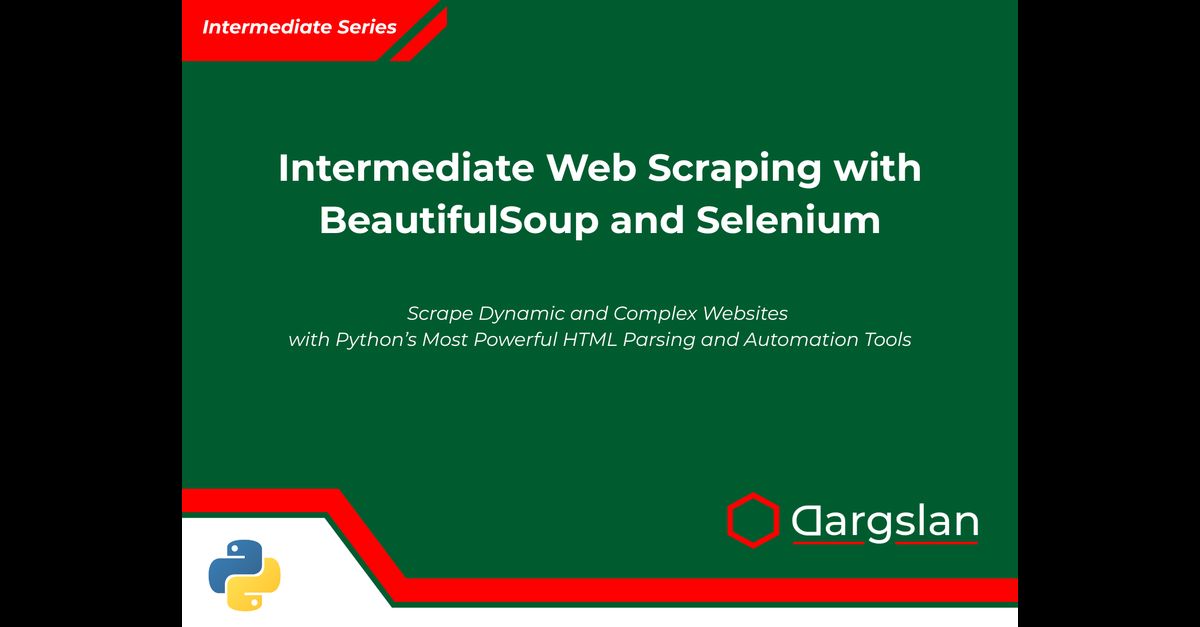
Intermediate Web Scraping with BeautifulSoup and Selenium



